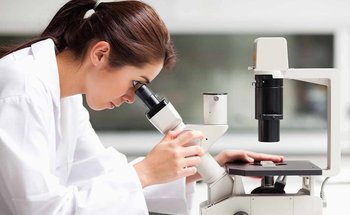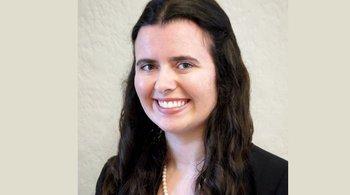
As you prepare to apply to medical school, it’s valuable to explore other potential career paths beyond a traditional MD degree. One path to consider is an MD-PhD degree, which provides training in both medicine and research.
But how do you know if it’s the right career path for you? We asked AAMC experts to explain the advantages of training to be a physician scientist through an MD-PhD program.
Who are physician scientists? Physician scientists are focused on scientific discovery and patient care at the intersection of science and medicine, understanding human health and disease from a scientific and clinical perspective. Physician scientists have the unique ability to identify and study important questions in health care. There are four pathways to become a physician scientist:
- Complete MD training and then conduct extended research through fellowship training.
- Complete MD training and then return to graduate school to earn a PhD degree.
- Complete PhD training and then enter medical school to earn an MD degree.
- Work towards both degrees simultaneously in a dual MD-PhD degree program.
In each pathway, students are exposed to a career in scientific research while also treating patients in a clinical setting.
What are MD-PhD Programs? MD-PhD programs provide training for the dual degree by integrating research and clinical training experiences where students learn to conduct hypothesis driven research in a mentored environment. There are over 100 MD-PhD programs affiliated with U.S. medical schools, and the National Institute of General Medical Sciences partially supports approximately 45 programs, known as Medical Scientist Training Programs (MSTPs).
These programs provide unique training experiences, including MD-PhD specific courses and professional development workshops, visiting scholar seminars, retreats, opportunities to attend national conferences and join organizations, and mentoring for graduate and residency training. The students and mentors in these programs are a vibrant community, working to advance the trainees’ development as a scientist and physician.
How long does training take?
The MD-PhD career path is a commitment, as training to complete both MD and PhD degrees takes about 7 or 8 years.
How do I pay for a MD-PhD program?
Most programs offer financial support, including stipends, tuition waivers, and health insurance to help students cover the cost of their scientific and medical training.
Who are MD-PhD students?
Annually, an estimated 600 students matriculate into MD-PhD programs. This is only about 3% of all students who matriculate into medical school. PhD training for MD-PhD students is typically in biomedical sciences, such as molecular, cellular, or human or animal studies in biochemistry, cell biology and microbiology, immunology and genetics, neuroscience, pharmacology, and physiology. However, PhD training may also be in fields outside of the classical biomedical sciences, such as bioengineering, chemical biology, bioinformatics, public health, anthropology, and bioethics.
What do MD-PhDs do after graduation?
Most MD-PhD graduates train in a residency program and become licensed to practice in a specific field of medicine. From there, they typically go on to careers that blend research and clinical medicine, though their research topic may or may not be closely related to their field of medical practice. Most MD-PhDs work in academic medical centers, such as medical schools or teaching hospitals. MD-PhDs also conduct research in institutes such as the National Institutes of Health or other government or private agencies, or work for pharma or biotech companies.
MD-PhD careers provide unique perspectives on questions about basic scientific discovery, medical intervention, or translational research. During their career, MD-PhDs may remain focused as a basic or clinical scientist, or become an administrative leader within their academic medical center. Their training provides opportunities to be successful in either environment.
Is an MD-PhD path right for you? To find out more, visit the AAMC website for information on MD-PhD dual degree training.

